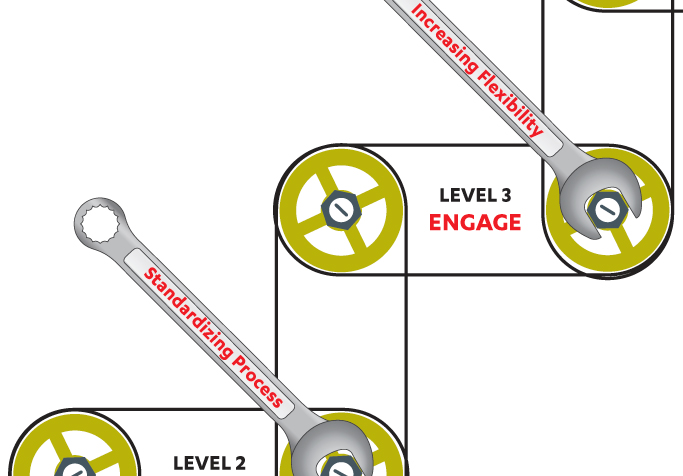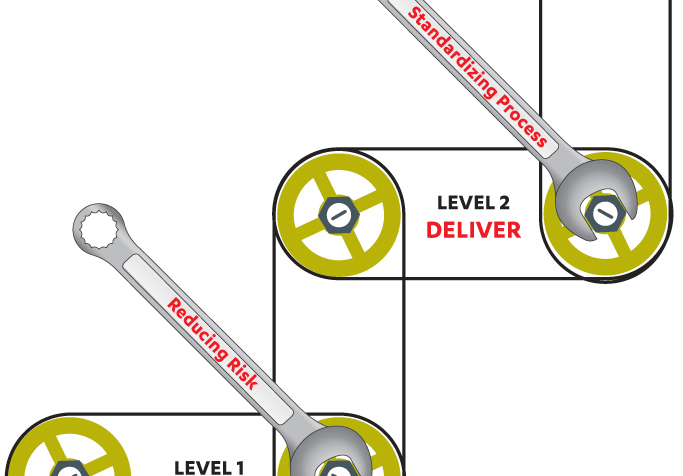Increasing IT maturity: Jumping the (very high) Level 2 hurdle
I often describe the Level 2 hurdle as the highest and hardest to jump over. I’ve witnessed many an IT organization trip and fall, ending up with the proverbial skinned knee. The biggest tripping point is also the most common one: IT leaders are too accustomed to managing “noise.”
The inclination is often to do something radical—like a reorg—in a desperate attempt to stop the noise. Can you start with a reorganization? Sure. But this only works for organizations at a very high level of maturity, where processes are well instituted. Likewise, it can also work for organizations at a very low level of maturity that lack process rigor, but it will often result in sub-optimization. It’s not about moving things around, it’s about doing things differently.
Getting past Level 2 requires a three-pronged approach:
Stop managing and start leading. This one’s not easy. Leaders at this level have worked very hard to get where they are. They’re confident in what they’re doing and they’re good at it. But when things start to change, the heroics stop mattering to the business and the noise begins, and it only gets louder as time passes. Often leaders make one of two decisions: 1) comply with whatever the business says, or 2) leave. But there is a third choice and it’s to lead, step up, break free from the rut of managing noise, and take the organization to a new place.
Make processes efficient, then effective. Organizations at a Level 2 already have many processes that are installed. Their focus needs to be on making them more efficient, and then effective. Gaining efficiency comes through repeating the process numerous times and measuring the results to continuously improve. As every good designer/architect …
[ Read More ]



